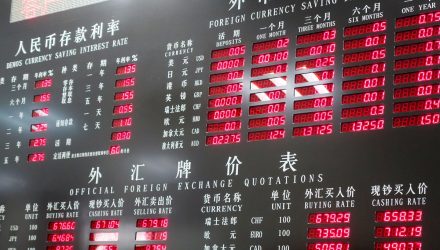China ETFs are emerging markets leaders this year and within that group are some sector-level opportunities that delivering impressive returns. That includes the Global X MSCI China Financials ETF (NYSEARCA: CHIX).
CHIX, which has nearly $110 million in assets under management, follows the MSCI China Financials 10/50 Index. That index provides exposure to large- and mid-cap Chinese financial services firms. The CHIX index “incorporates all eligible securities as per MSCI’s Global Investable Market Index Methodology, including China A, B and H shares, Red chips, P chips and foreign listings, among others,” according to Global X.
The fund is up nearly 24% this year, a testament to the renewed brisk pace of lending by Chinese financial services firms.
“According to the PBOC, new lending, bond issuance, and stock-market issuance provided about 8.18 trillion yuan ($1.2 trillion) to households, nonfinancial businesses, and local governments in the first three months of 2019,” reports Matthew Klein for Barron’s. “That’s 40% higher than in the first quarter of 2018, when new AFRE was 5.31 trillion yuan.”
Favorable Valuations
With CHIX, investors can access financial services sector growth at a discount relative to equivalent domestic ETFs. Due to previous fears about instability in the Chinese banking system, many of which have yet to materialize, banks in the world’s second-largest economy trade at depressed valuations relative to their U.S. counterparts. The estimated 2019 price-to-earnings ratio on CHIX is just 7.45.
“The data demonstrate the Chinese government’s determination to prevent the economy from slowing, even at the cost of higher indebtedness and greater distortions in the composition of economic activity,” according to Barron’s.
Related: Get the Best Exposure to China With These 2 ETFs
CHIX holds 81 stocks, many of which are large, state-controlled Chinese banks as highlighted by an average market value of $47.77 billion for the fund’s components. In large part, loan growth in China is being driven by those usual suspects.
“The increase has been driven mainly by traditional lenders. Chinese banks originated about 4.67 trillion yuan of new loans in the first quarters of 2016, 2017, and 2018. In the first three months of this year, however, they originated 6.29 trillion yuan of new loans—a 30% increase. The current pace of lending is now at an all-time high,” according to Barron’s.
For more information on the Chinese markets, visit our China category.

